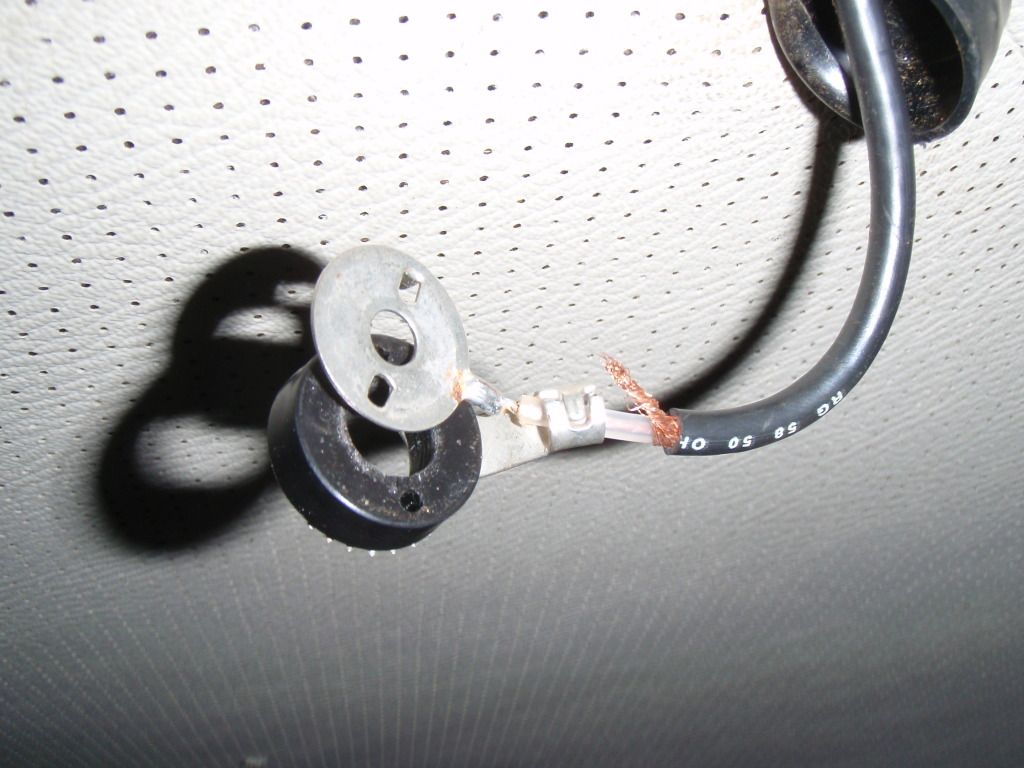The new CB info thread
Posted: 27 Jul 2012, 12:41
To get the ball rolling: 4x4cb have some useful succinct info on installations worth passing on
http://www.4x4cb.com/public/page.cfm?CatID=613" onclick="window.open(this.href);return false;
PS the link at the bottom regarding earthing problems is well worth a read but here's a c'n'p:
What is a ground connection?
To work properly, an aerial has to be grounded - i.e. the bottom of the mount needs to have an earth.
In a fixed aerial used at home, this will be the pole going down into the ground, but on a vehicle, the actual metal of the vehicle has to do the job.
Where your mount makes contact with the vehicles body, you will need to scrape a bit of the paint away, so that you make a good metal to metal connection.
On Land & Range Rovers, when the aluminium is exposed to air, a chemical reaction called oxidisation starts to happen. Over a relatively short period of time this can introduce a resistance to the earth connection. Without prevention, the connection is soon lost, and your aerial is trying to work without a ground plane, with a very noticeable deterioration in performance (and the risk of damage to the set).
One method you could use is to run a short earth strap (heavy gauge speaker cable will do) from the bottom of the mount to a point on the chassis or elsewhere on the vehicle.
There are a couple of products available that allow you to get a good ground plane without having to worry about scraping paint away, or using an earthing strap...
Artificial Ground Planes
An Electronic Ground Plane. This can be fitted to a bracket or mirror mount (although too large for fitting to gutter mounts) and has a standard 3/8 aerial connection on the top, and socket for a standard CB cable plug on the bottom.
This unit simulates a connection to ground, so you do not have to worry about your metal to metal earthing. This will cure any SWR problems which are down to poor earthing, but if an aerial is in the wrong place, i.e. too close to metal around it, the EGP will not help.
Also a good way of helping to reduce interference as it allows the aerial to be completely isolated from the vehicle.
http://www.4x4cb.com/public/page.cfm?CatID=613" onclick="window.open(this.href);return false;
PS the link at the bottom regarding earthing problems is well worth a read but here's a c'n'p:
What is a ground connection?
To work properly, an aerial has to be grounded - i.e. the bottom of the mount needs to have an earth.
In a fixed aerial used at home, this will be the pole going down into the ground, but on a vehicle, the actual metal of the vehicle has to do the job.
Where your mount makes contact with the vehicles body, you will need to scrape a bit of the paint away, so that you make a good metal to metal connection.
On Land & Range Rovers, when the aluminium is exposed to air, a chemical reaction called oxidisation starts to happen. Over a relatively short period of time this can introduce a resistance to the earth connection. Without prevention, the connection is soon lost, and your aerial is trying to work without a ground plane, with a very noticeable deterioration in performance (and the risk of damage to the set).
One method you could use is to run a short earth strap (heavy gauge speaker cable will do) from the bottom of the mount to a point on the chassis or elsewhere on the vehicle.
There are a couple of products available that allow you to get a good ground plane without having to worry about scraping paint away, or using an earthing strap...
Artificial Ground Planes
An Electronic Ground Plane. This can be fitted to a bracket or mirror mount (although too large for fitting to gutter mounts) and has a standard 3/8 aerial connection on the top, and socket for a standard CB cable plug on the bottom.
This unit simulates a connection to ground, so you do not have to worry about your metal to metal earthing. This will cure any SWR problems which are down to poor earthing, but if an aerial is in the wrong place, i.e. too close to metal around it, the EGP will not help.
Also a good way of helping to reduce interference as it allows the aerial to be completely isolated from the vehicle.

